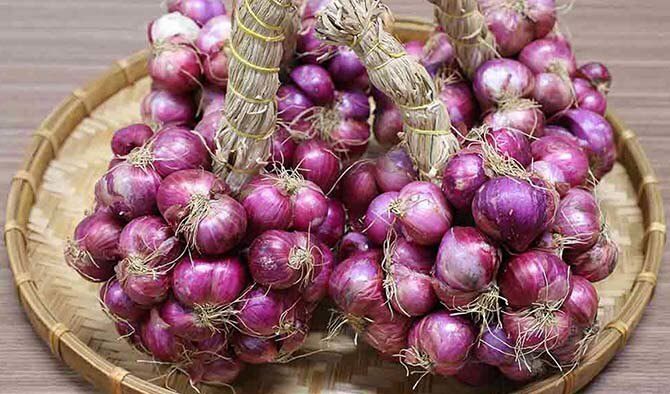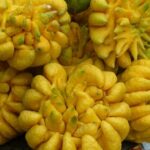Creating a delicious jar of pickled onions requires not only attention to detail but also a mastery of essential tips, from selecting the right type of onions to proper preservation methods. This article will reveal all the secrets to making perfectly flavored pickled onions, ready to be included in your family’s Lunar New Year feast.
Selecting the Right Onions: The Foundation of a Delicious Dish
The best type of onion for pickling is the red onion, known for its mild spiciness, crisp texture, and vibrant color. If possible, opt for Ly Son red onions, renowned for their exceptional flavor and quality.
When choosing onions, keep the following in mind:
– Bulb Size: Go for onions that are medium-sized, neither too big nor too small, to ensure even pickling.
– Firmness: The onions should feel heavy and firm, with no signs of hollowness.
– Outer Skin: Prefer onions with thin, bright-colored skins, free from scratches or blemishes.
– Inner Quality: When peeled, the flesh should be plump, evenly colored, and free from any bruises or damage.
While red onions are ideal, white onions can also be used for pickling, provided they are fresh and not spongy or soft.
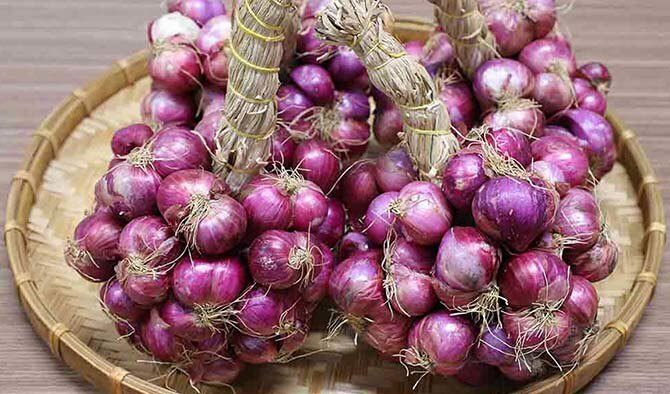
Preparing the Onions: The Secret to Reducing Their Pungency
One common mistake when pickling onions is retaining their pungency, which diminishes the overall taste of the dish. To address this, follow these preparation steps:
– Soak in Rice Water: Before pickling, soak the onions in rice water for at least 6-8 hours or overnight. Rice water helps reduce pungency, promotes fermentation, and prevents scum formation during pickling.
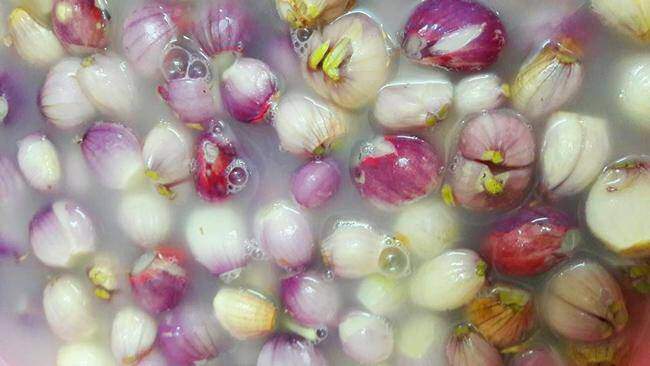
– Multiple Soaks: For completely pungency-free onions, you can soak them twice. First, soak them overnight, then peel and rinse them before soaking again for a few hours prior to pickling.
– Rinse with Boiled and Cooled Water: After soaking, thoroughly rinse the onions to eliminate any remaining impurities and pungent odor.
Important Considerations for Pickling Onions
– Ensure a Clean Fermentation Environment: Sterilize tools like glass jars, spoons, and chopsticks with boiling water, and let them air dry before use. This is crucial to prevent mold or scum formation.
– Water Temperature for Brining: The water used for brining should be cooled to a lukewarm temperature. Hot water will soften the onions, while cold water slows down the fermentation process.
– Thoroughly Mix the Brine: Ensure that the salt, sugar, and vinegar are completely dissolved in the brine for a clear and evenly flavored pickle.
Preservation Tips for Long-Lasting Pickled Onions
Once the pickling process is complete, store the pickled onions in a cool, well-ventilated area or in the refrigerator. When removing onions for consumption, use clean, dry utensils to avoid contaminating the remaining batch. Always seal the jar tightly after each use to maintain crispness and flavor.
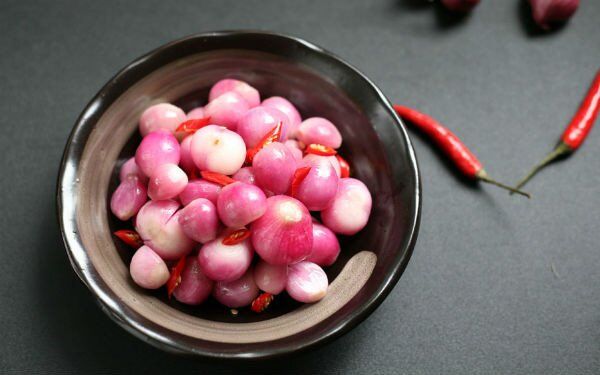
With these tips, you’re guaranteed to create delicious, crisp, and sweet pickled onions that are not only visually appealing but also safe for consumption. Happy pickling, and best wishes for a wonderful Lunar New Year!

























